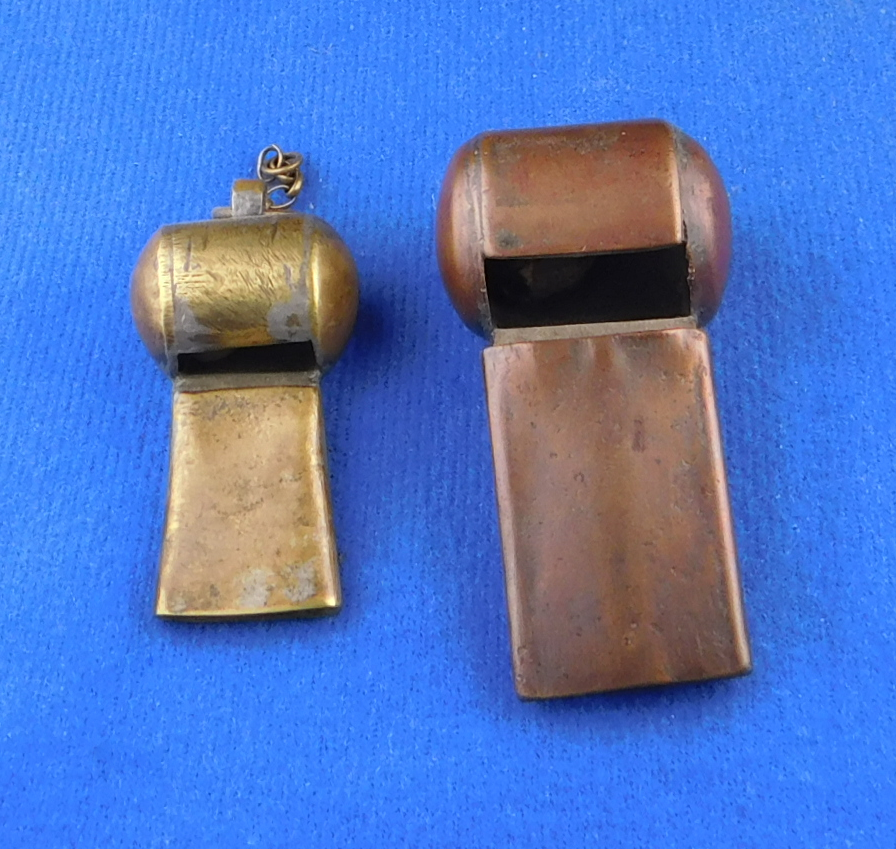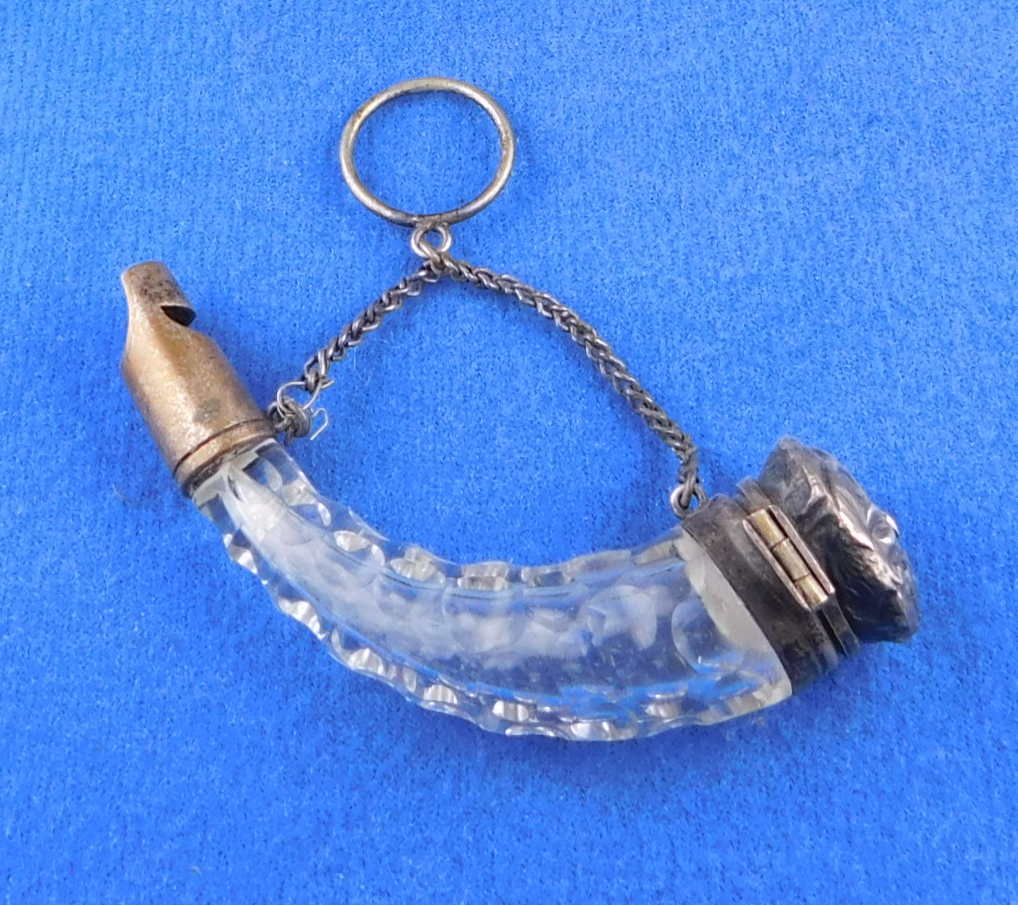Spotlight > Specific Manufacturer > United States > F.L. Johnson > 094
WHISTORY
From Wallingford, USA is Frederick L. Johnson, a major player in the history of hand whistles. He along with others such as F.J. Hall, A.P. Hatch, W.H. Burt and G.S. Scott manufactured whistles in the northeast state Connecticut circa 1885 to 1940.
Specifically, F.L. Johnson was a whistle designer and inventor at the turn of the 19th century during the period c. 1885 to 1910, his whistles being very distinctive. Johnson’s whistles were designed to capitalize on the bicycle craze following the popularity of the ‘high wheel’ cycling craze that would then give way to the ‘safety’ bicycle.
So, instead of the usual hunting whistles of his time seen manufactured by other manufacturers such as BGI, ‘his work’ centered on cycling whistles, with very few exceptions. Why do we say ‘his work’, rather than his whistle company ?? Because ironically, it is apparent that he did not actually make the whistles he invented for most of his career. His company, the Johnson Whistle Company was rather short lived by comparison to his overall influence of the field, perhaps only 5 years towards the end, spanning a time of over twenty years and very late in his career at that.
At this point it bears repeating ( see SPOTLIGHT 85 on the F.L. Johnson slider ); F.L. Johnson’s use of the total circumference was unique for his time in relation to lightweight hand held cycling whistles and in fact almost all others. The ‘normal’ approach was to use one window with a fipple or two windows with a disc or variations of such. However Johnson realized he could create a different sound quality if he could use the whole round edge as in a steam whistle. The sound quality is reflected in it being a deep and hollow as well as strong sound quality. If one was to listen to a shorter but also steam like design bell whistle for example, from years prior, they would hear higher pitched whistles. How did he achieve his sound ?? By adding a longer chamber depth, amplifying the resonance. One wonders what the original patent design would have produced ??
He files for and receives his first patent in 1885 for a ‘bicycle alarm whistle’ that was manufactured to be installed attached to the bicycle handles. This whistle laid the ground work for his whistles to follow. Several design characteristics were used and modified for years to come. Those being as follows:
- A full long tube design
- The principles of steam whistles using the full circumferential edge of the tube
- ‘Stays’ that attached to the outside tube to hold the mouthpiece to the tube
This was discussed somewhat previously ( SEE spotlight # 85 ) where it was postulated that he used the principles found in Bell whistles. Indeed they themselves utilized the steam whistle design. However the following notes from his 1885 patent application make it very clear his aim.
‘The whistle which I here present is of the character known as tubular or steam whistles, and it consists of a head, A, in the outer end of which is a circular open slit, a. Below this head is the tube B, which in internal diameter corresponds substantially to the diameter of the slit a, the tube B being attached to the head by connections C, attached to the tube upon its outside, and below its open end, the said connections extending to and united with the head above and outside the slit, and so as to bring the mouth of the tube into such relation to the open slit a that air passing through the slit will impinge upon the edge of the tube and produce a sound, after the manner of what are known as steam whistles.’
Here is the drawing from that application. Note the ‘India rubber’ squeeze ball ?? Also what came to be called ‘stays’ that connect the top and bottom sections. Who manufactured this first whistle is unknown presently. But it was not Johnson because in less than three years his modified whistle would appear, and would be manufactured by at least three companies. Was this bicycle one made earlier ?? Unknown.
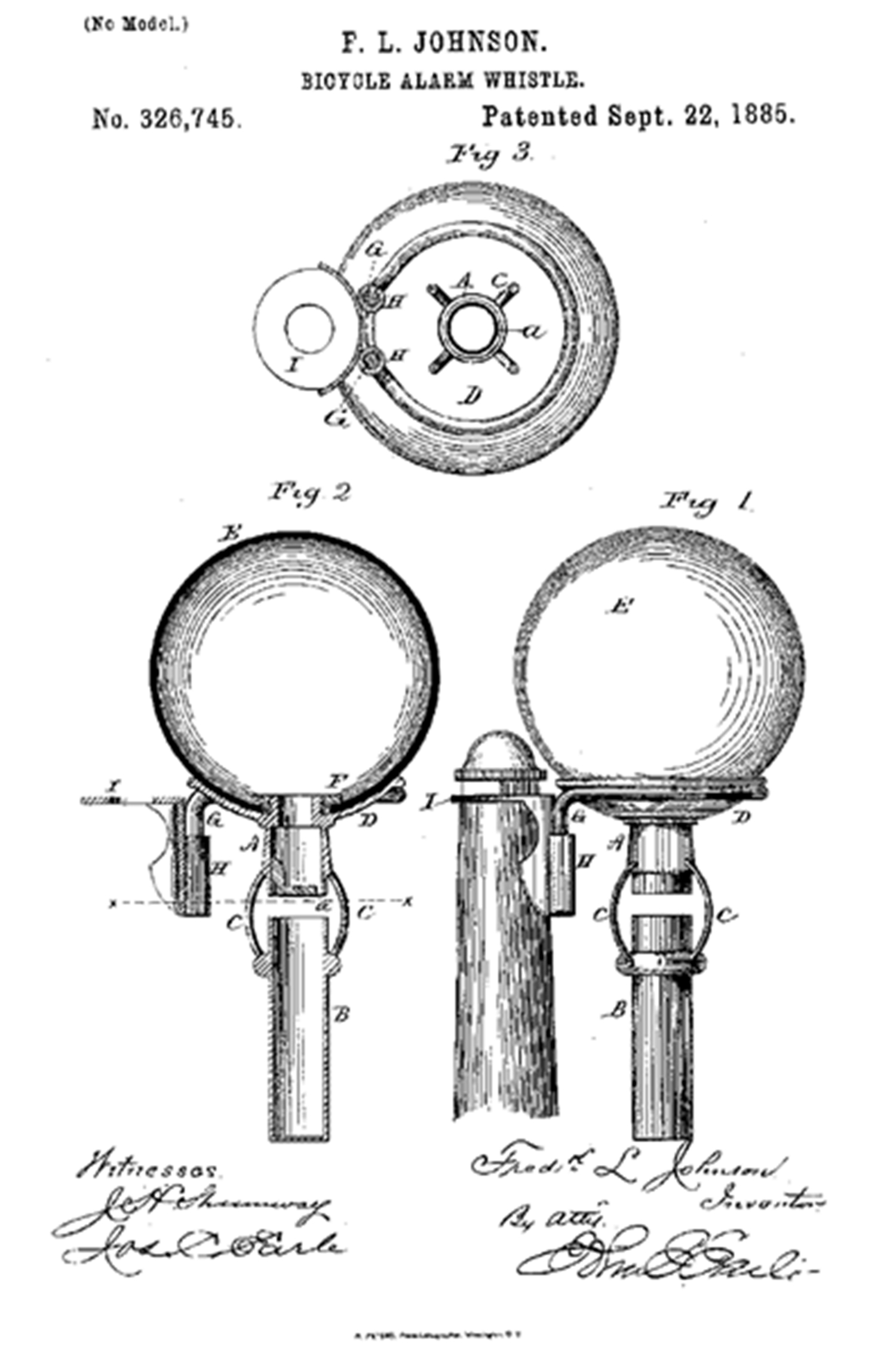
From this point we find the first advertisements dated 1888 for a hand held model called the Surprise Whistle and it preceded by at least a full year his 1889 patent application for a freehand tubular design. Surprising ?? Although the advertising is quite aggressive and altogether exaggerated, perhaps the ability to vary the sound seemed novel enough to elicit sales for many years to come, perhaps a decade, however the pure rubber was not to last as long as the metal parts. It would become hard and brittle. Ones found today are quite decayed and more of a collector’s item than usable. Here is an advertisement July 4th 1888 from Wheel and Cycling Trade.
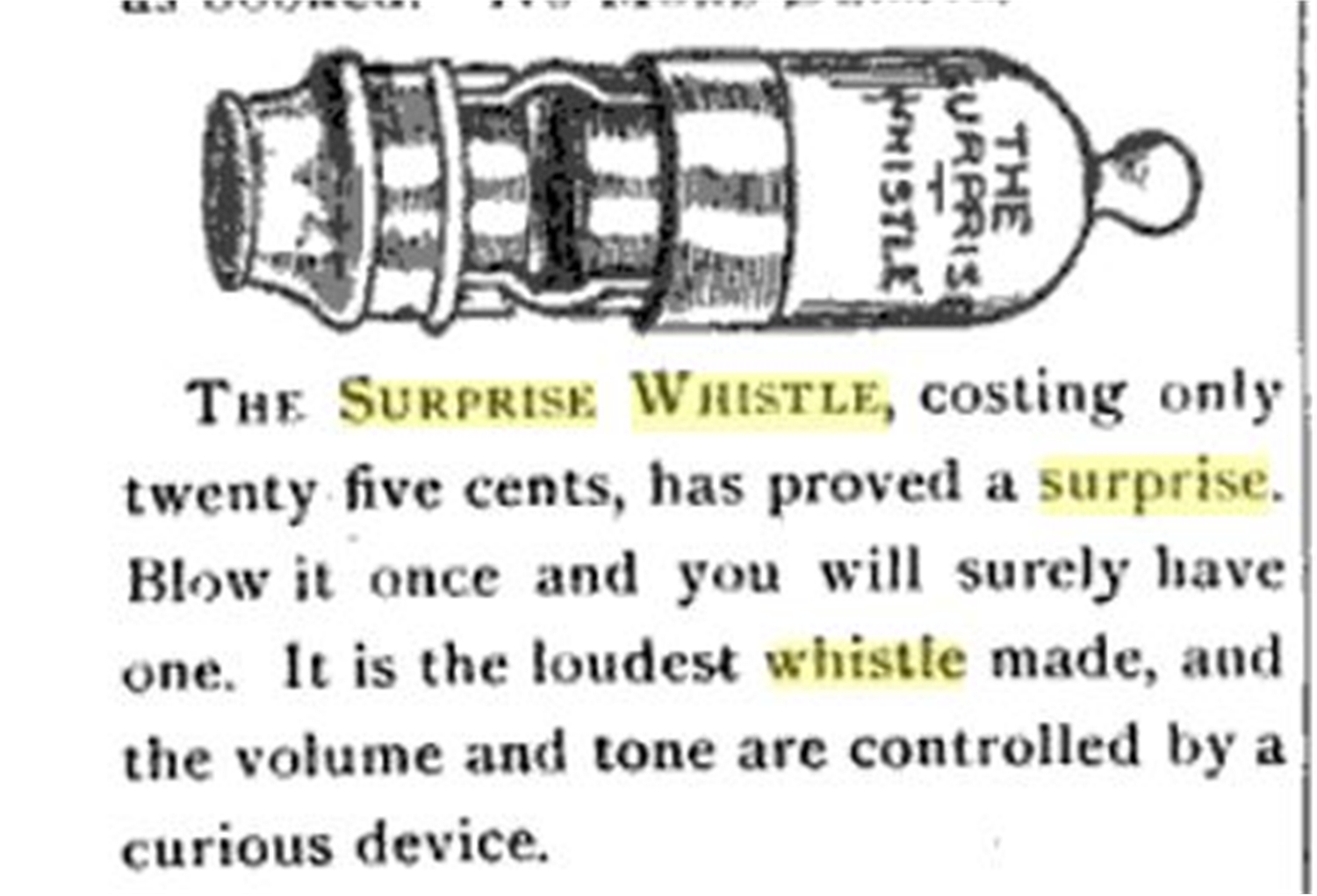
The companies who had manufacturing rights advertised it as follows:
Domestic Manufacturing Co. Wallingford ( filed as a business, July 2nd 1886 ) had rights to manufacture the Surprise Whistle circa 1888.
American Pin Co. advertised that they manufactured the Surprise Whistle for Johnson – 1890 through 1893 in American Stationer.
Hall Manufacturing -1895 through 1897 advertised as manufacturing the Surprise Whistle — Cycling Business
In 1903 F. J. Hall who owned the Hall Manufacturing Cycle Company patented a model that was patterned after Johnson’s 1889 design, the addition being a modification of the inner chambers. He states in his patent application that — ‘This invention relates to improvements in bicycle Whistles and is designed as an improvement of the whistle shown in the patent to Johnson of January 29, 1889, and assigned to me May 15, 1890.’
( Note D in the illustration. )
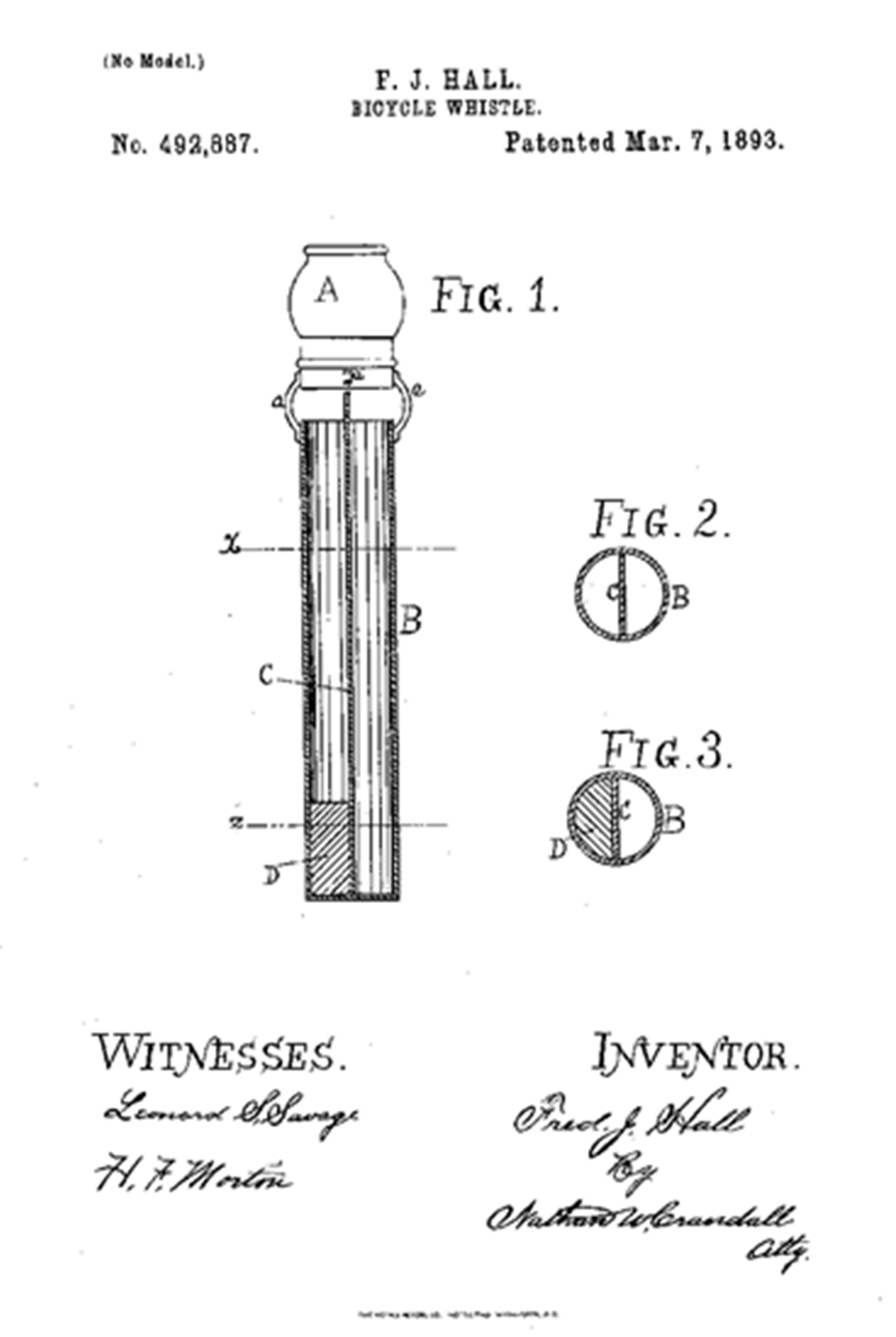
At the base of the patent application for 1889, Johnson includes a remarkable dual tube whistle utilizing the circumferences of two tubes simultaneously. They are ‘held off’ not with stays now but with wire incorporated in the center. It is much larger than comtemporary dual tube whistles of the time and much better built. The sound is superior by far. See the drawing bottom as follows:
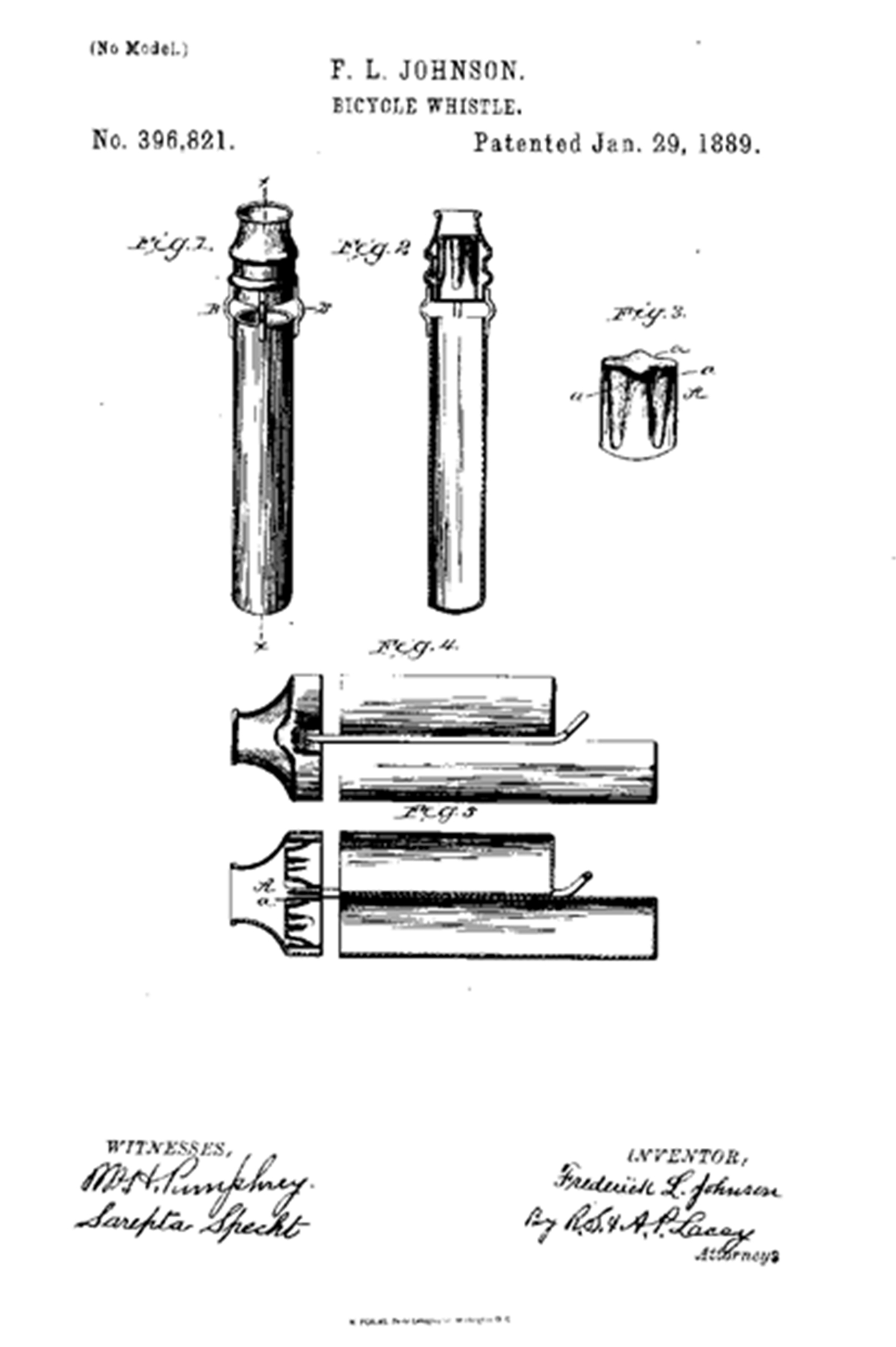
Previously this was thought to have been manufactured by F.L Johnson. However considering the aforementioned patent information, it must be seen that F.J. Hall manufactured all of Johnson’s early whistles and at some point later aquired the rights for the Surprise Whistle in the process. This would account for the modifications inside the mouthpiece to the disc attachment and the lack of the ‘indented tube’ he so carefully described in the patent application as follows:
‘The purpose of the indentations a in the tubular valve is to form ducts or channels for the passage of air or other medium for sounding the whistle. This is an important feature, because if the valve preserved its tubular form throughout its length there would be no opening for the passage of the air from the mouth-piece to the barrel, because the said mouth-piece is contracted at its upper end, which end, conforming and approaching close to the upper end of the tubular valve, would close the mouth-piece just as effectually as a stopper. The indentations, however, preclude a closing of the mouth-piece and afford an unobstructed passage for the air. By having the indentations the resisting-surface of the upper end of the valve is reduced to some considerable extent. This is another item to be taken into consideration.’
This feature has not been found ( yet ) despite looking at a dozen whistles. They all have the 90 degree rods inside attached to the center of a disc and the sidewall. Perhaps Hall threw out this feature in lieu of a cheaper and simpler method of manufacturing. This was done to both the single and double tubes.
F.L. Johnson went on to patent two more whistles before the end of the century. One has distinct split level windows, the other modified ‘stays’ and the attachment of the disc to the side walls. Up until this time a rod bent at a 90 degree angle inside the mouthpiece attached from the center of the disc to the sidewall, now he has eliminated the rod and substituted three ‘pips’ that would project out sideways to the walls edge, much simpler and cleaner attachment with merely modifying the disc.
Here again he apparently farms out to another person his whistle design, assigning half of the patent rights to George Backes for the split level ( Aug 29, 1899 ), who was a member of the firm M. Backes manufacturing toy percussion caps and torpedoes. They both worked at Simpson, Hall and Miller. We have never found the 1899 modified disc model previously described ( Feb 21, 1899 ).
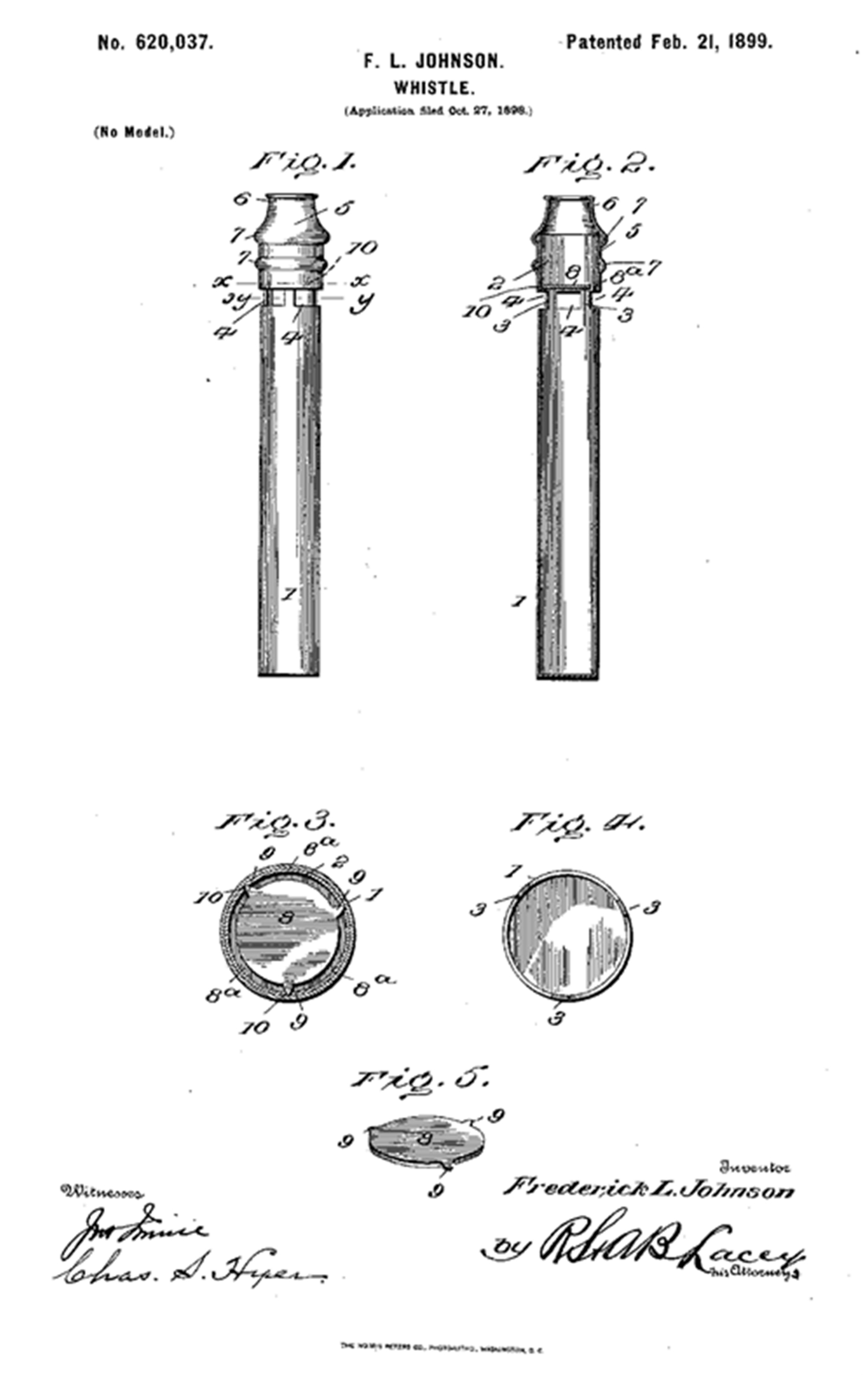
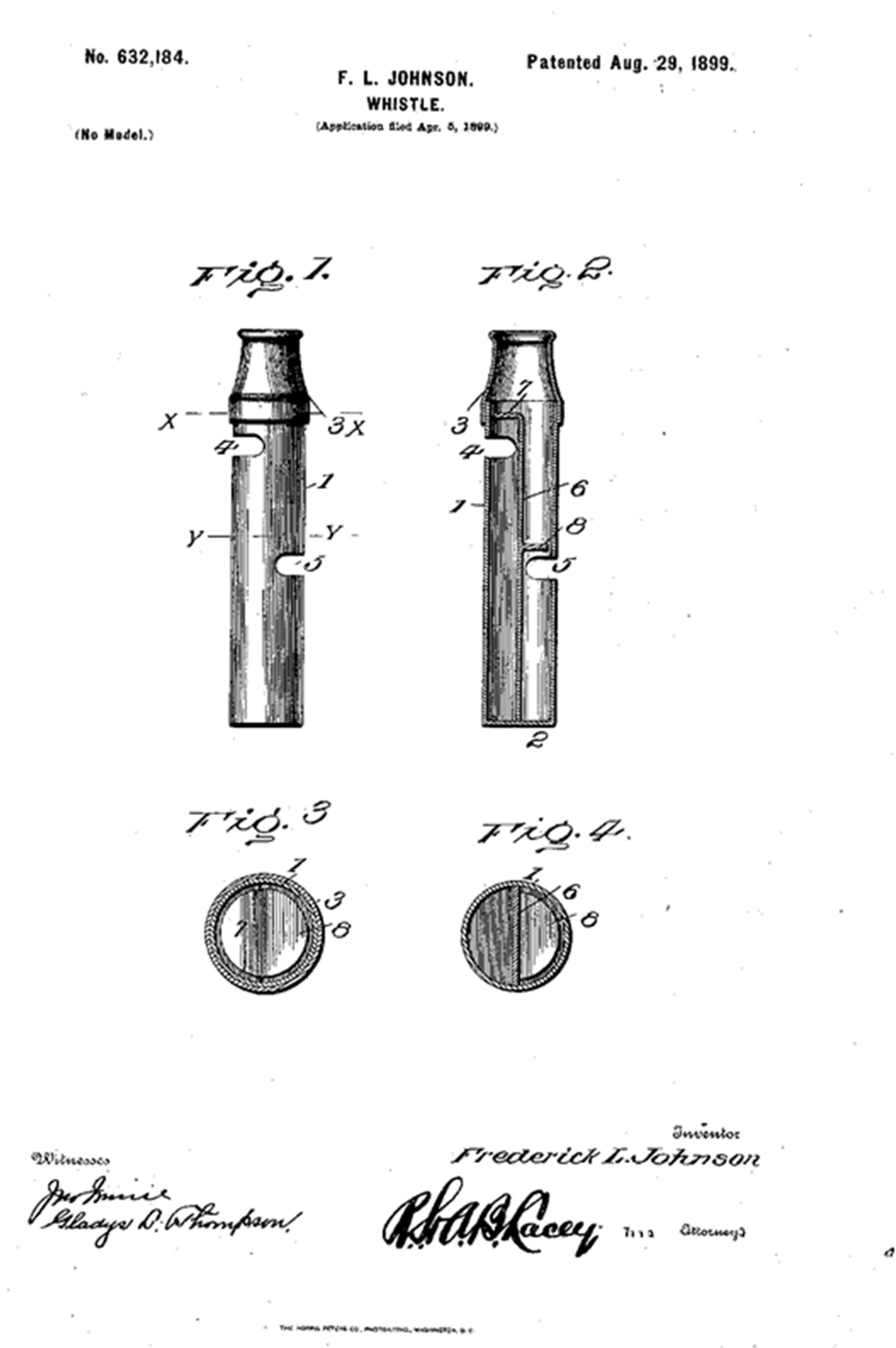
Quite late in his career did Johnson patent another bowl type whistle ( 1904 ) with an angled mouthpiece, this too has not been found. Pictured here:
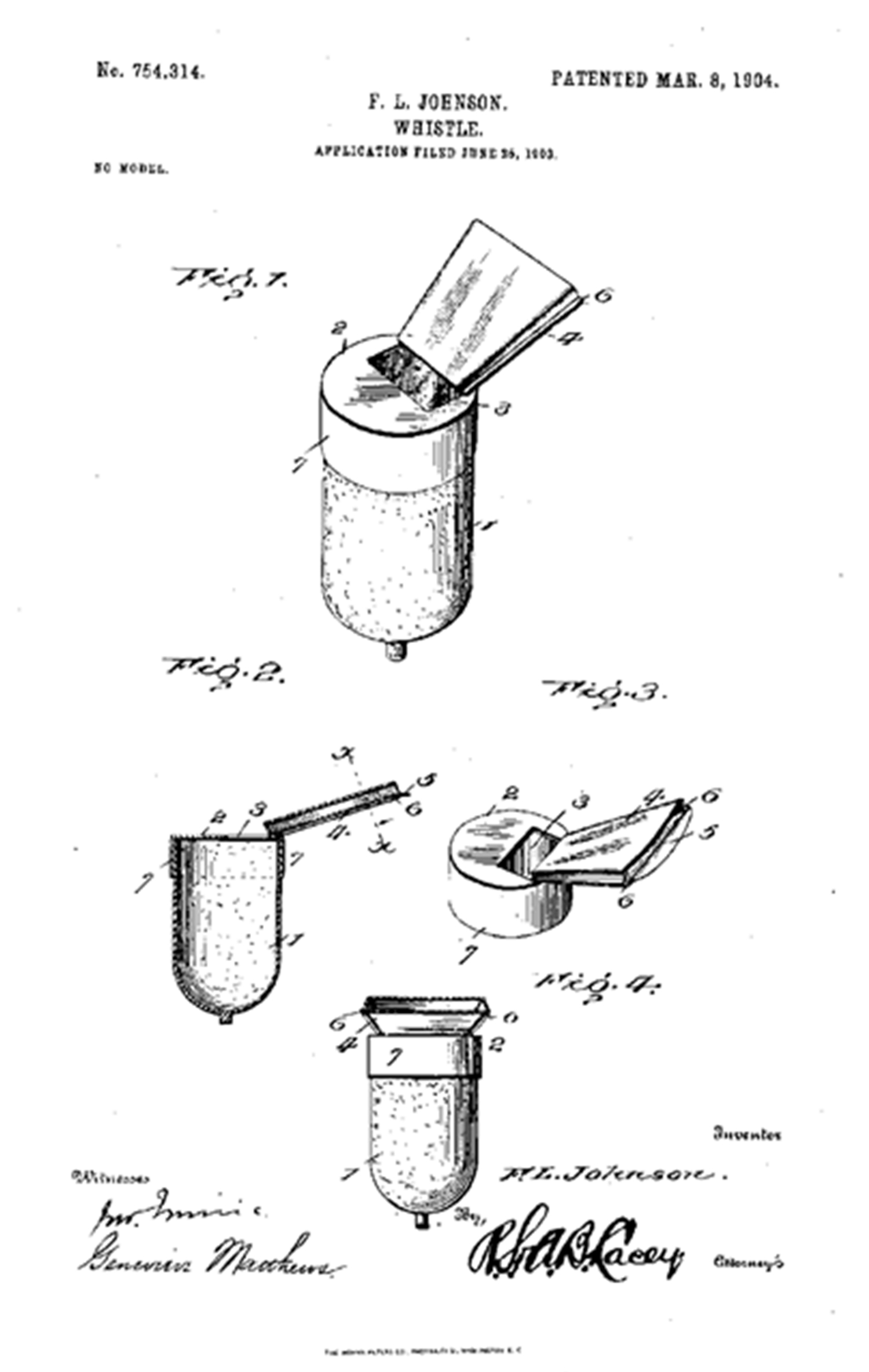
WHISTLE ARCHEOLOGY
1885 – PATENT – Sept 22 first bowl, an attached bicycle whistle
1889 – PATENT — Jan 29, single and dual tube cycling
1889 – PATENT Feb 21, single tube
1890 – assigned to F.J. Hall ??? ( as stated in his patent of 1893 )
1891 – ‘surprise’ advertised
1893 – employee of S.H.M. & Co. – h. Simpson Ave
1895 – same
1897 – same, — h 77 Lee
1899 – PATENT Feb. 21, 1899 2nd patent
1899 – PATENT Aug 29, 1899 ( ½ to George Backes )
1899 – employee factory L, I.S.Co., 179 South Elm Street ( International Silver Co.
1900 – Feb 21 ( filed ), single tube ( Canadian ) with Thomas Brosnan of Wallingford 66,735 ( because of the Canadian branch for S H M Co ?? )
1901 – PATENT- whistle with G.W. Backes
1901 – Johnson Whistle Co. – 17 Wallace, h 33 South Elm
1903 – Johnson Whistle Co. – 198 South Elm Co. h do
1903 – PATENT – June 25, rubber bowl patent
1906 – mfrs. Call whistles 179 South Elm
1906 – Johnson Whistle Co. – 179 South Elm Co. h do
1907 – employee factory L, I S Co. h South Elm bey borough line
1866 S.H.M. & Co = Simpson, Hall & Miller Co … cutlery and silver hollowware –
(Samuel Simpson, Almer I. Hall, Friend Miller)
1890 over 300 employees at S H M Co.
1898 bought by International silver Co.
1893 F.J. Hall PATENT a similar tube whistle and he lives in Wallingford too.
Questions for research ??
Why are Johnson’s addresses so mixed in with the International Silver Company ??
Who is Thomas Brosnan found on a shared Canadian patent when he lived in Wallingford ??
So now let’s begin a review of whistles from F.L. Johnson.
First up from a private collection is the Surprise whistle. The rubber bowl is deteriorated; the metal part clearly reveals F.L. Johnsons patented design for 1889, — stamped on the upcoming whistle that matched, but was all metal. We note that this whistle was advertised for sale and therefore being produced at least one year before it was patented.
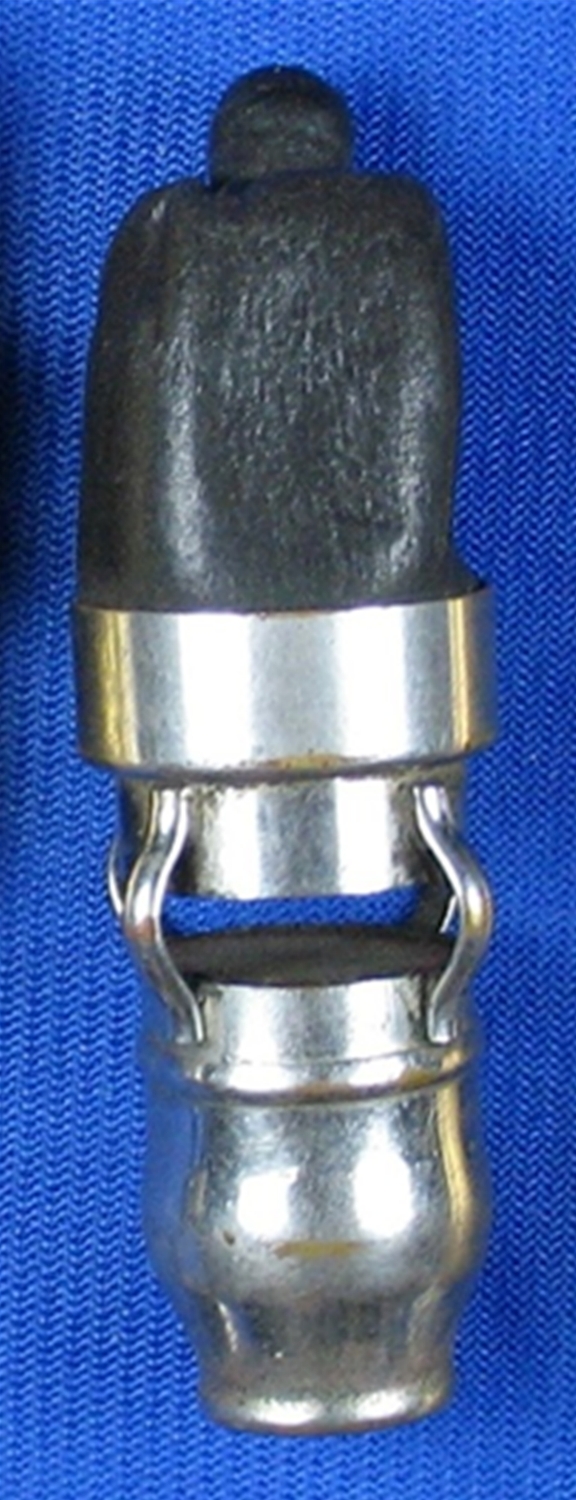
Three manufacturers were involved with the Surprise Whistle before, during and after patenting. We saw how the inside was patented one way and morphed into a variant attachment. How was this Surprise whistle one attached to the disc ??
Now the manufactured one by F. J. Hall’s cycling company. This is typically what is found thought to be made by F.L. Johnson.
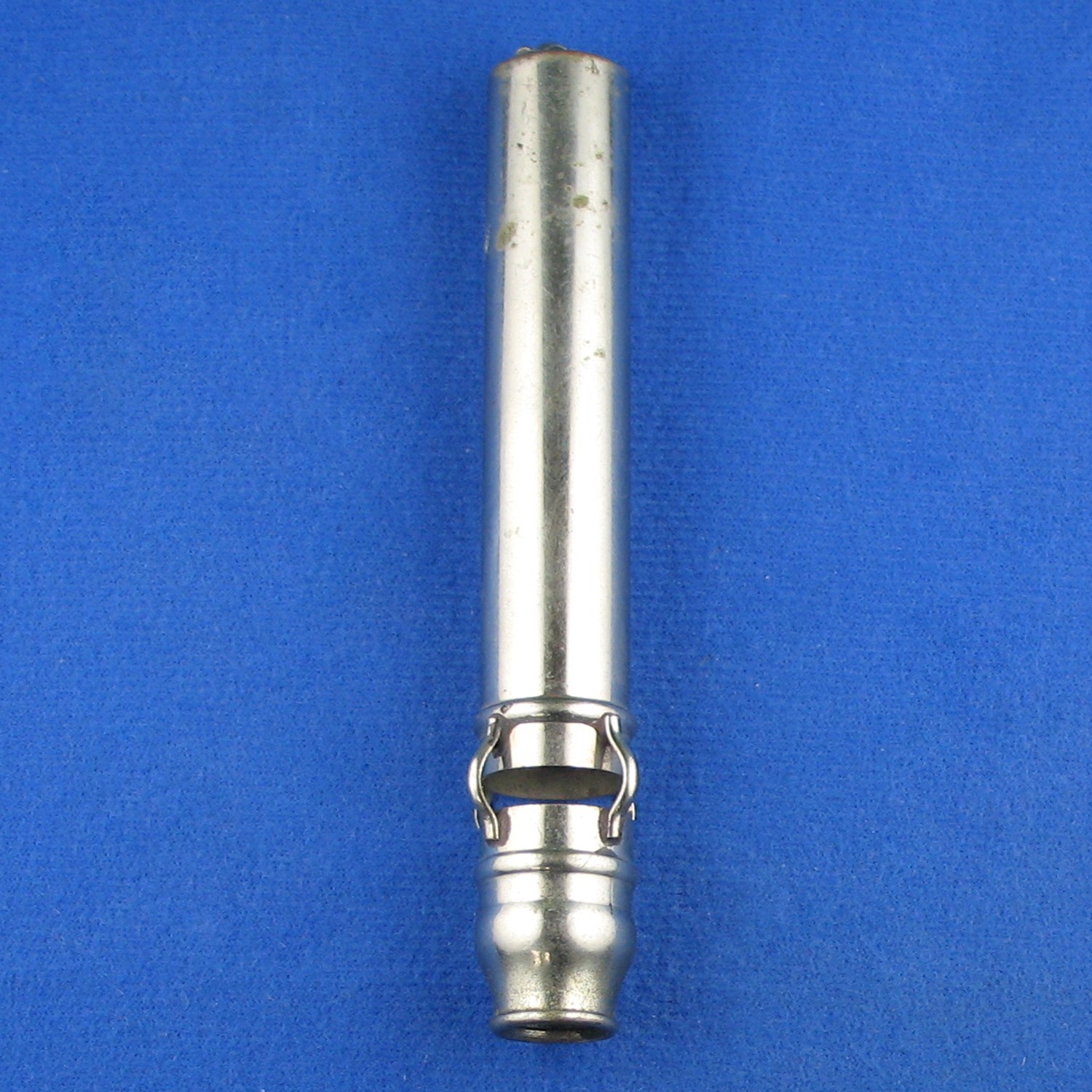
Here are a couple variations.
The first has only two stays opposite of each other.
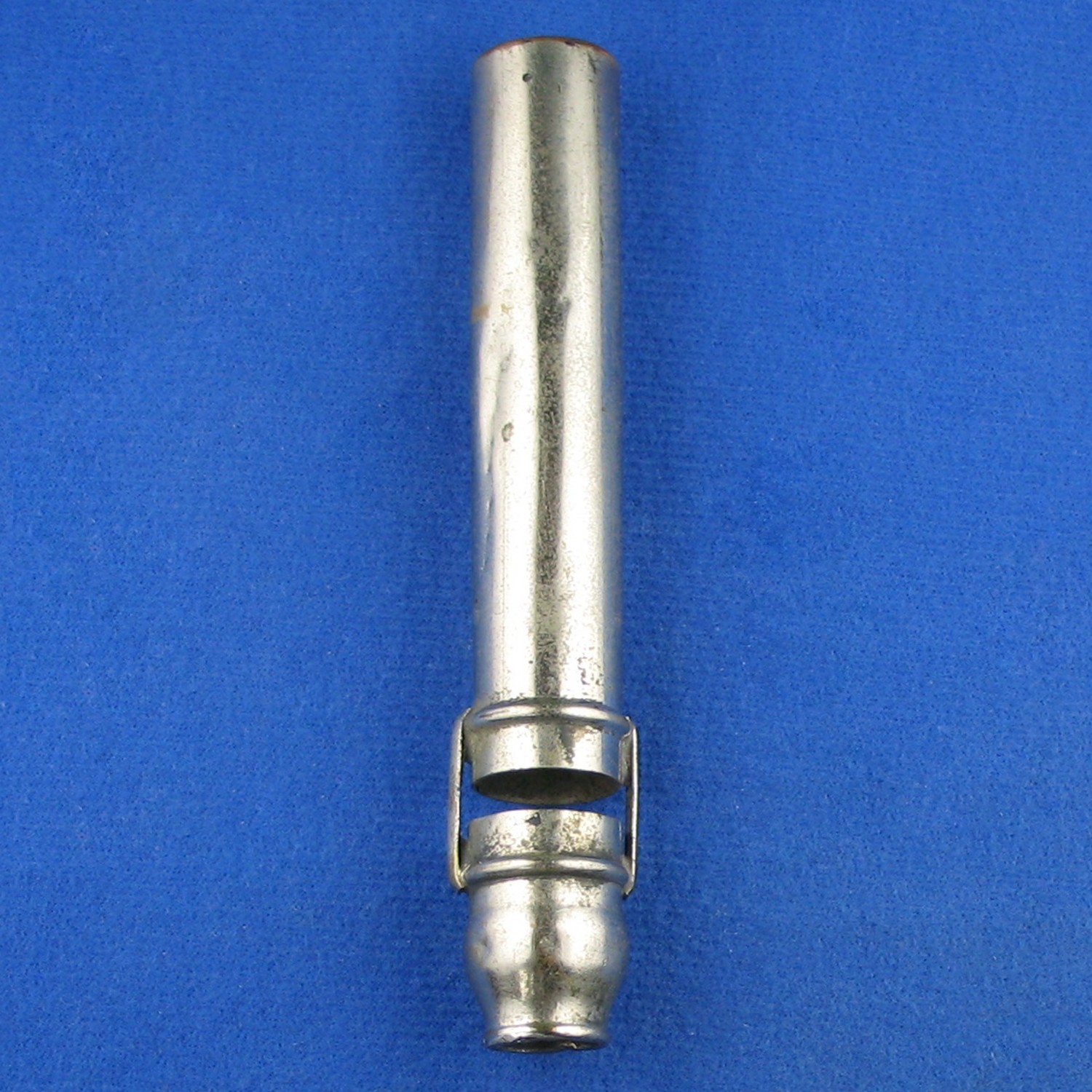
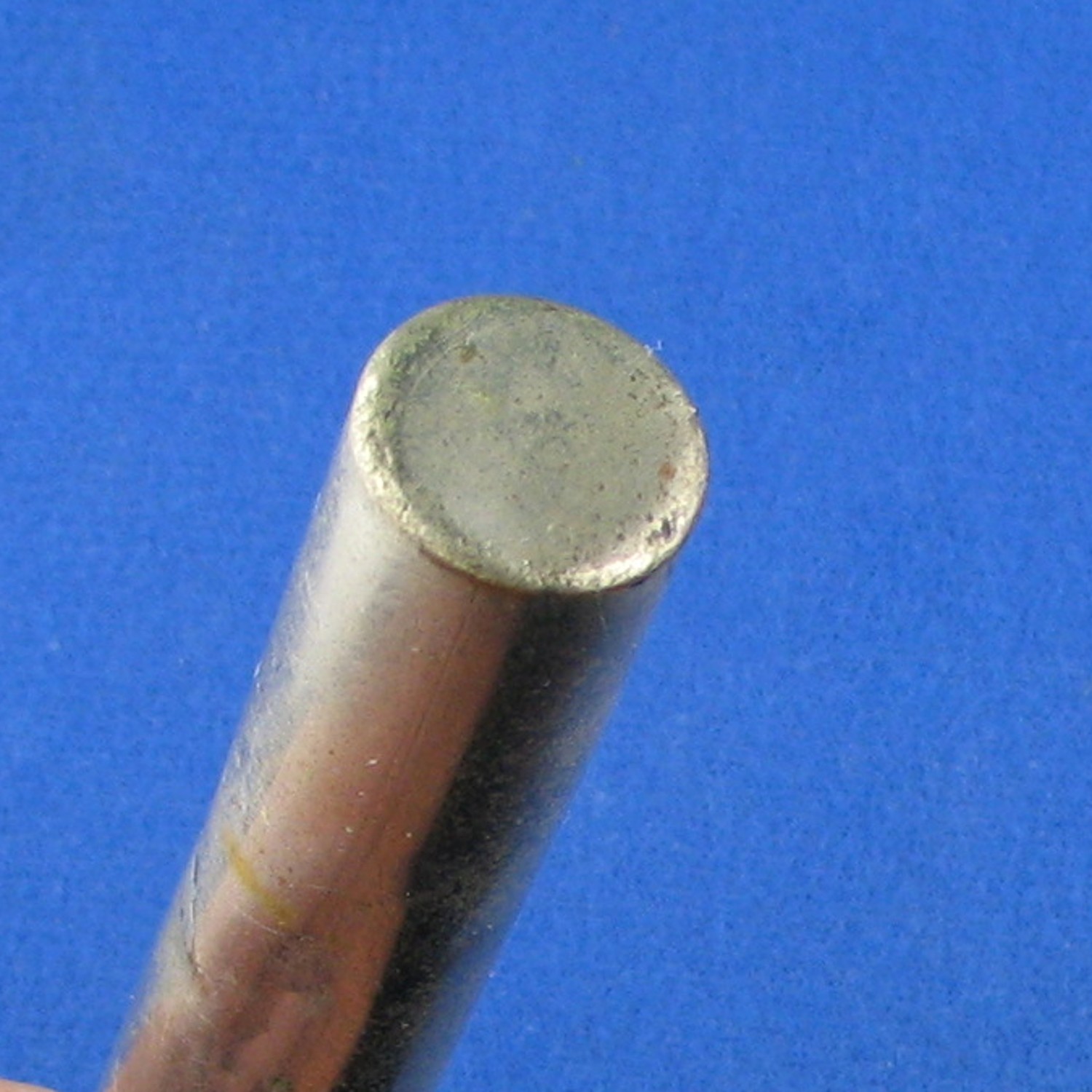
The second has four stays. In both cases they are straight and not curved, rare to see. Note when four stays were used that it was stamped for the patent. Possibly the two stays was an earlier model.
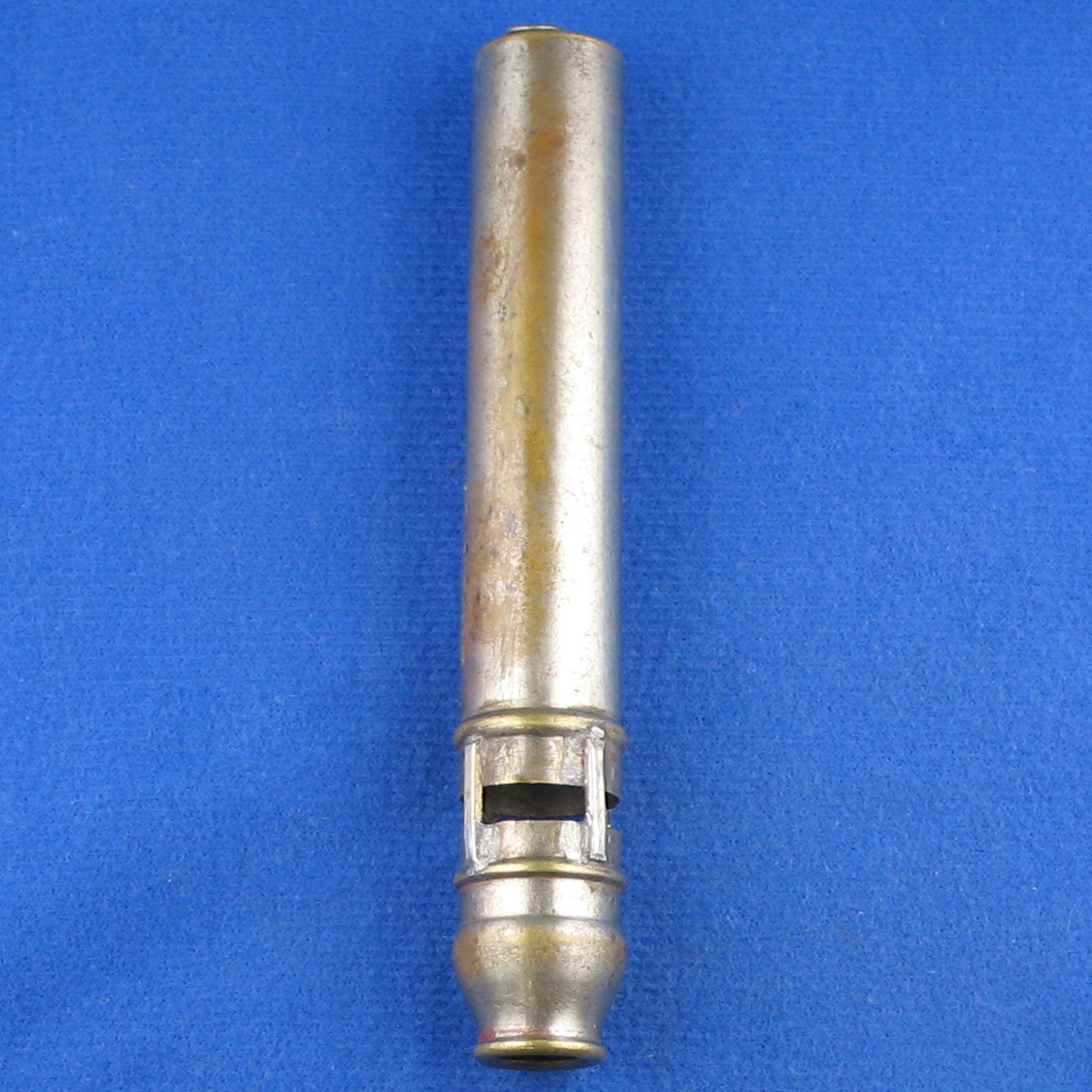
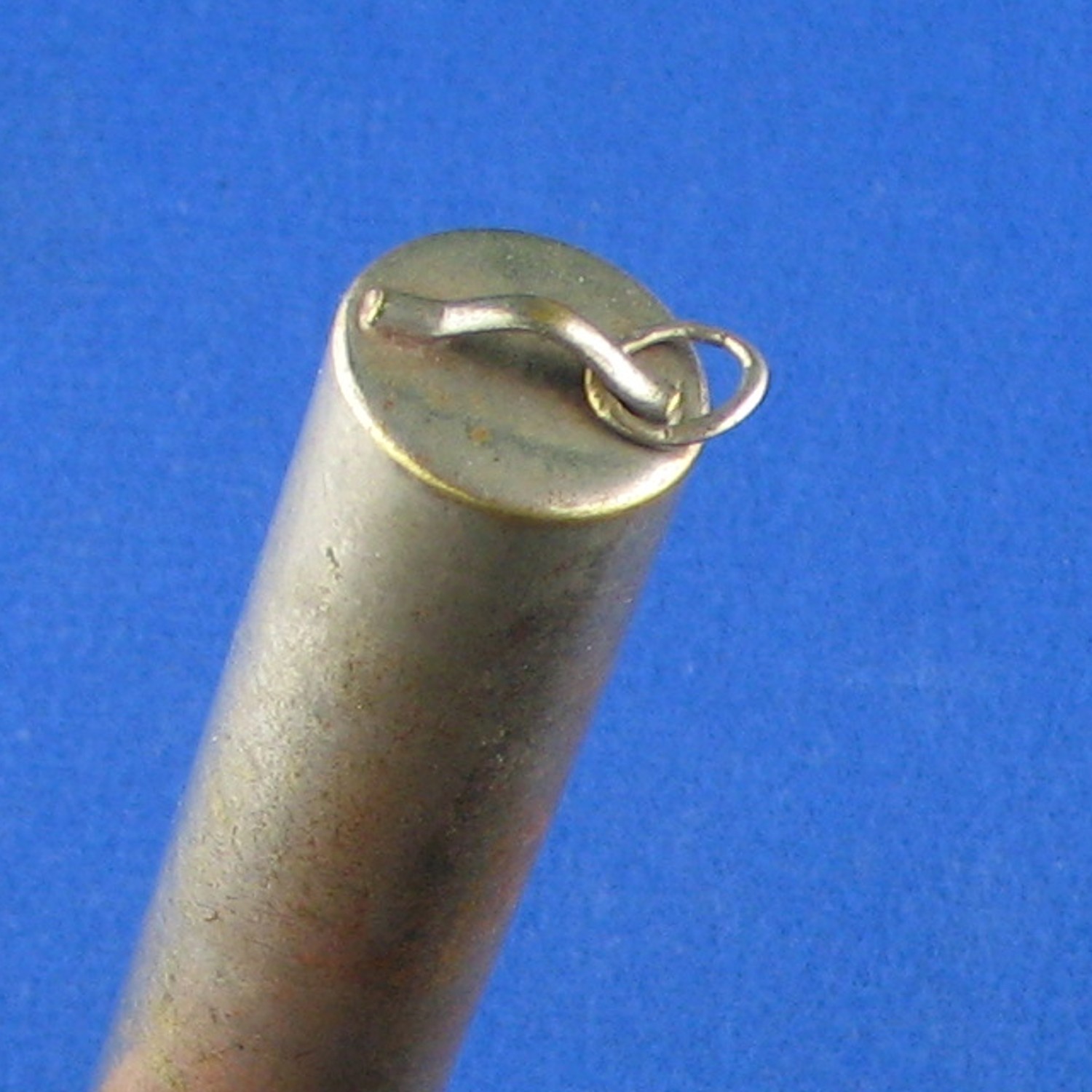
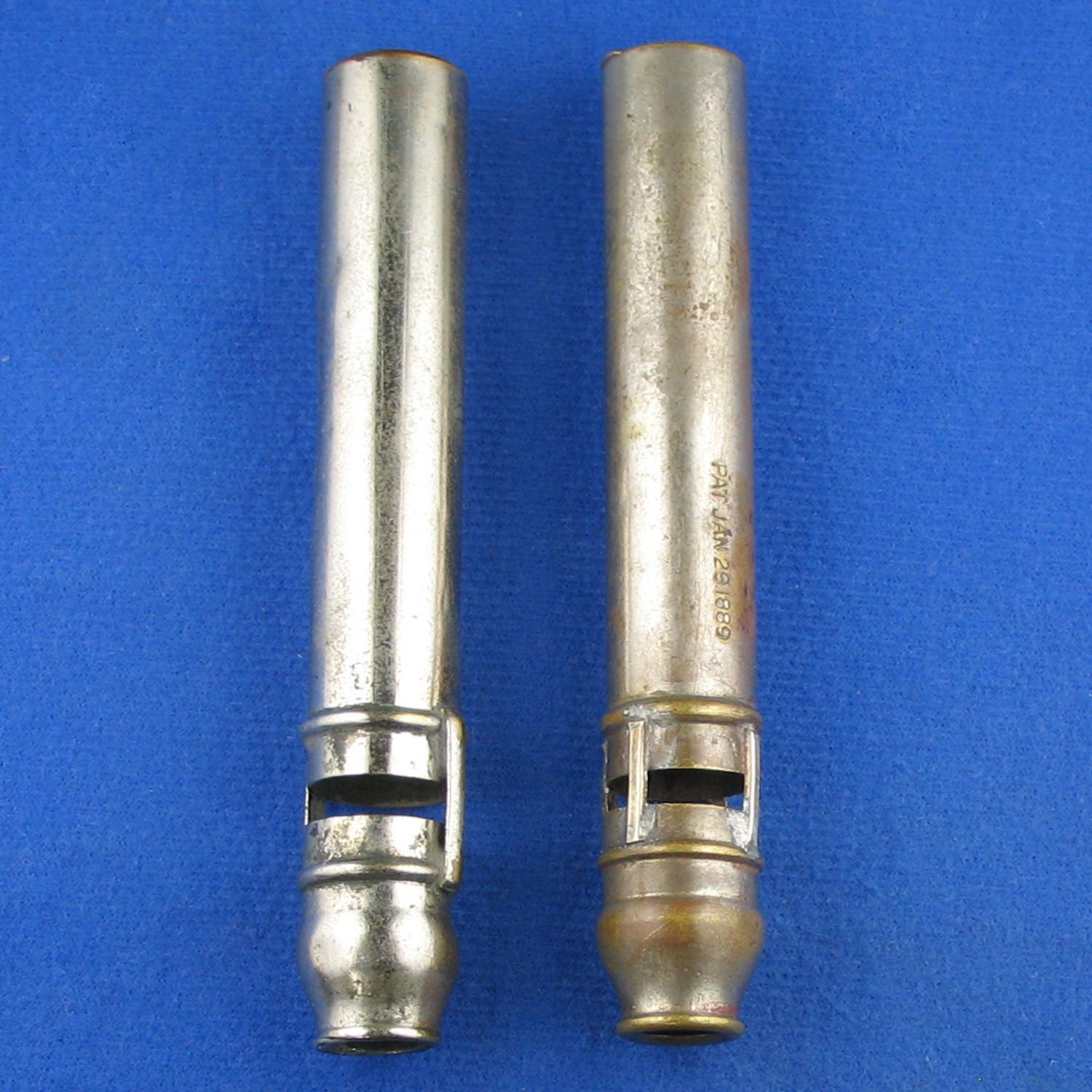
Model 168 with a flattened mouth in a Martin Signal catalog circa 1930
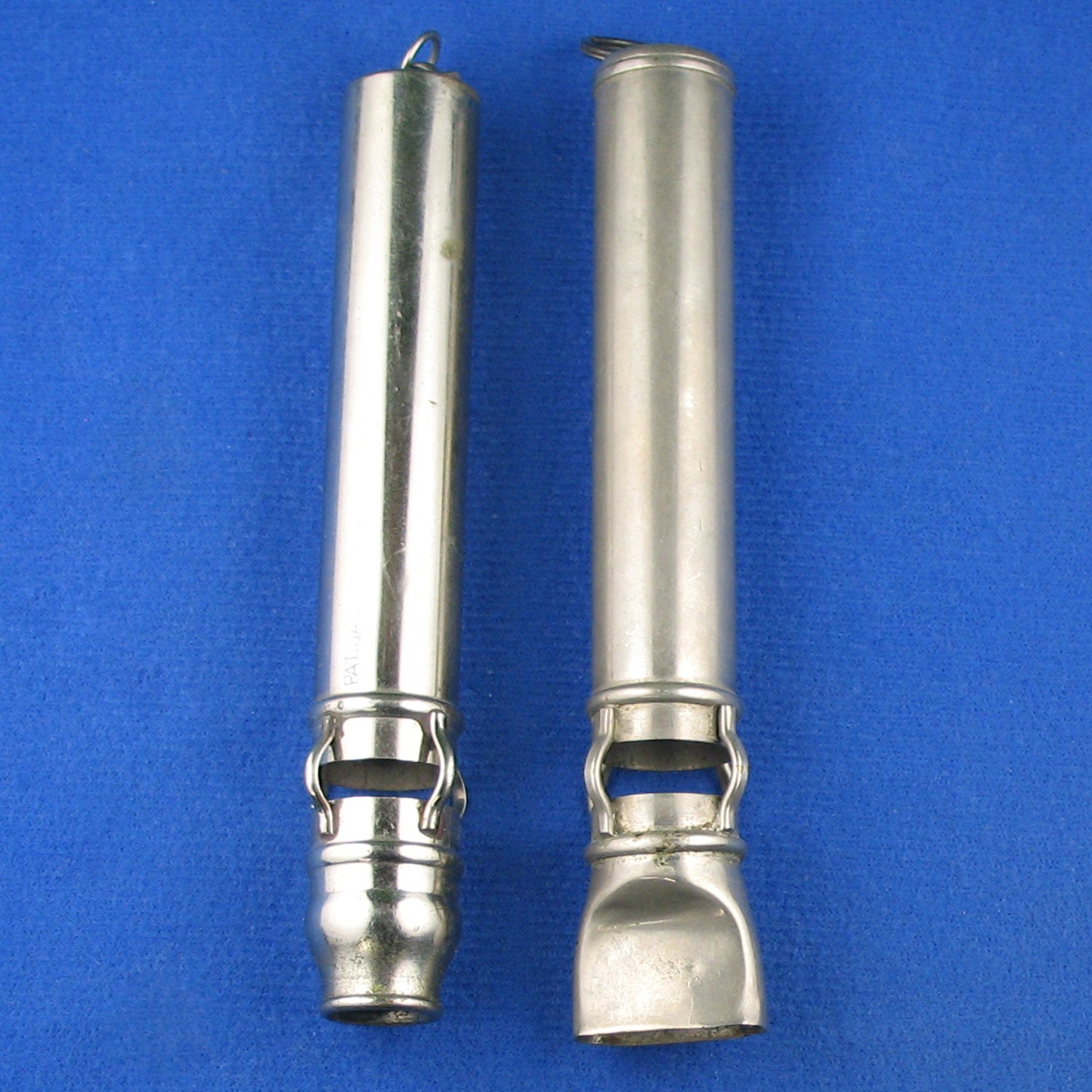
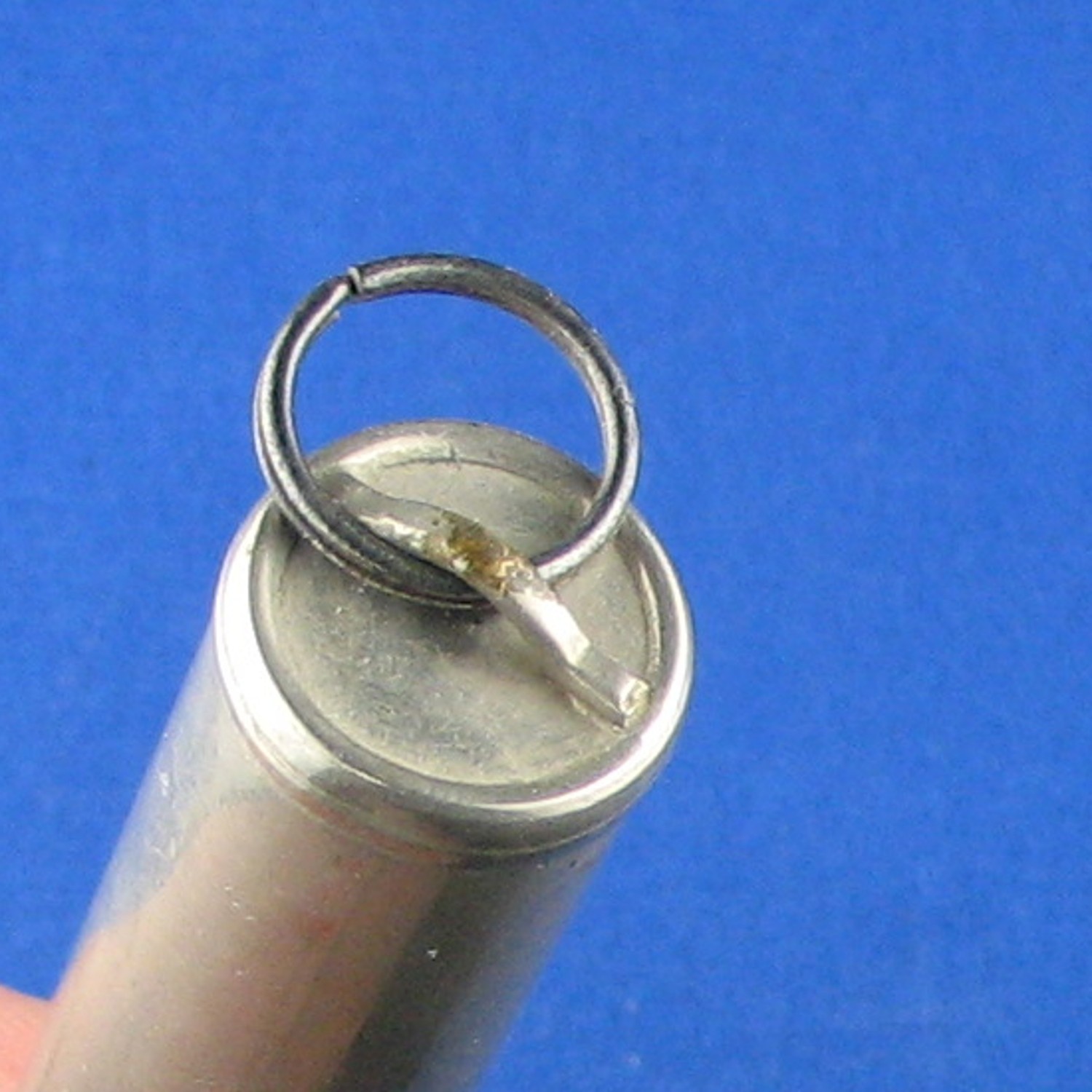
Here is a slider whistle, very rare, which was only found in a 1910 Drummers trap catalog as a locomotive sound effect whistle, number 36. ( see SPOTLIGHT 85 )
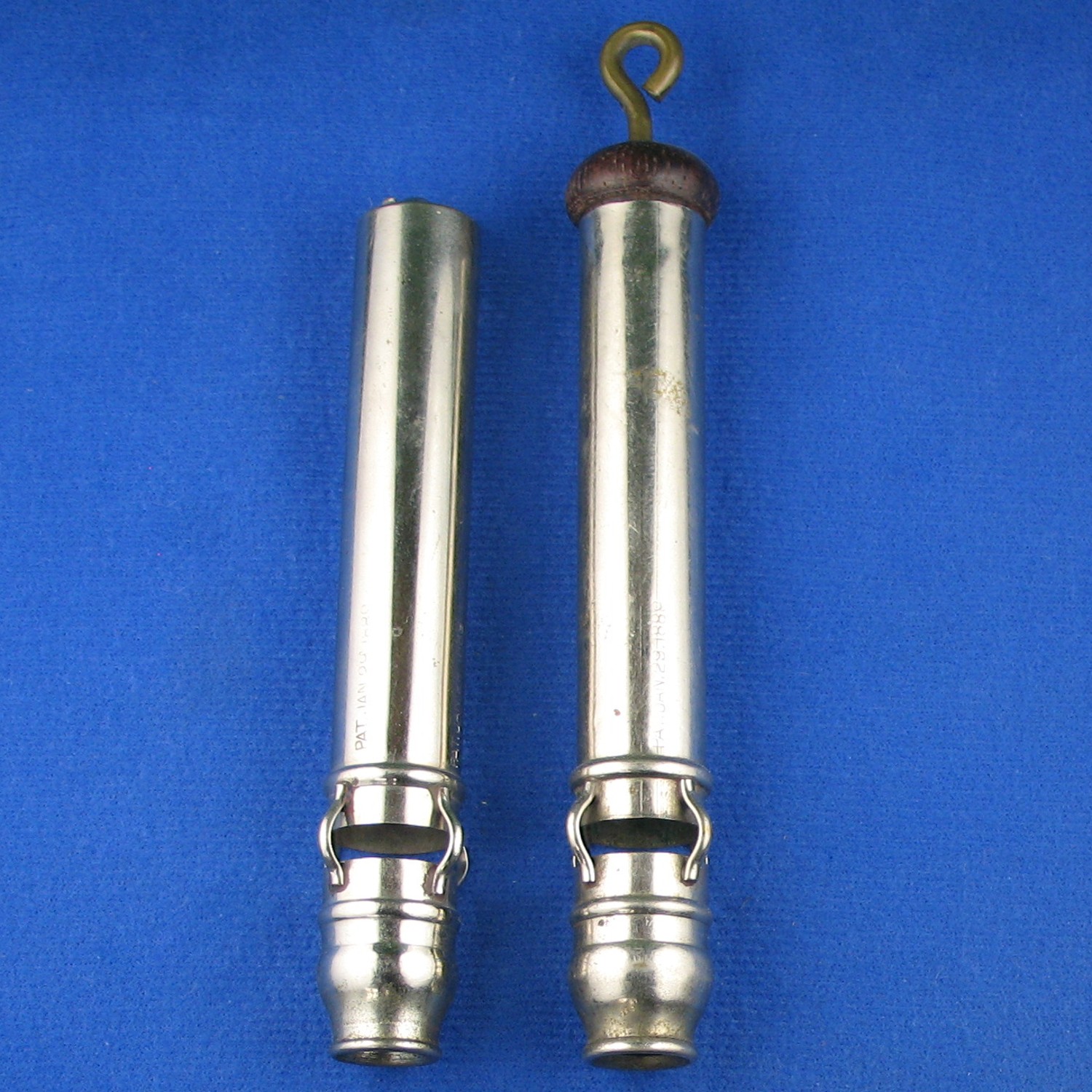
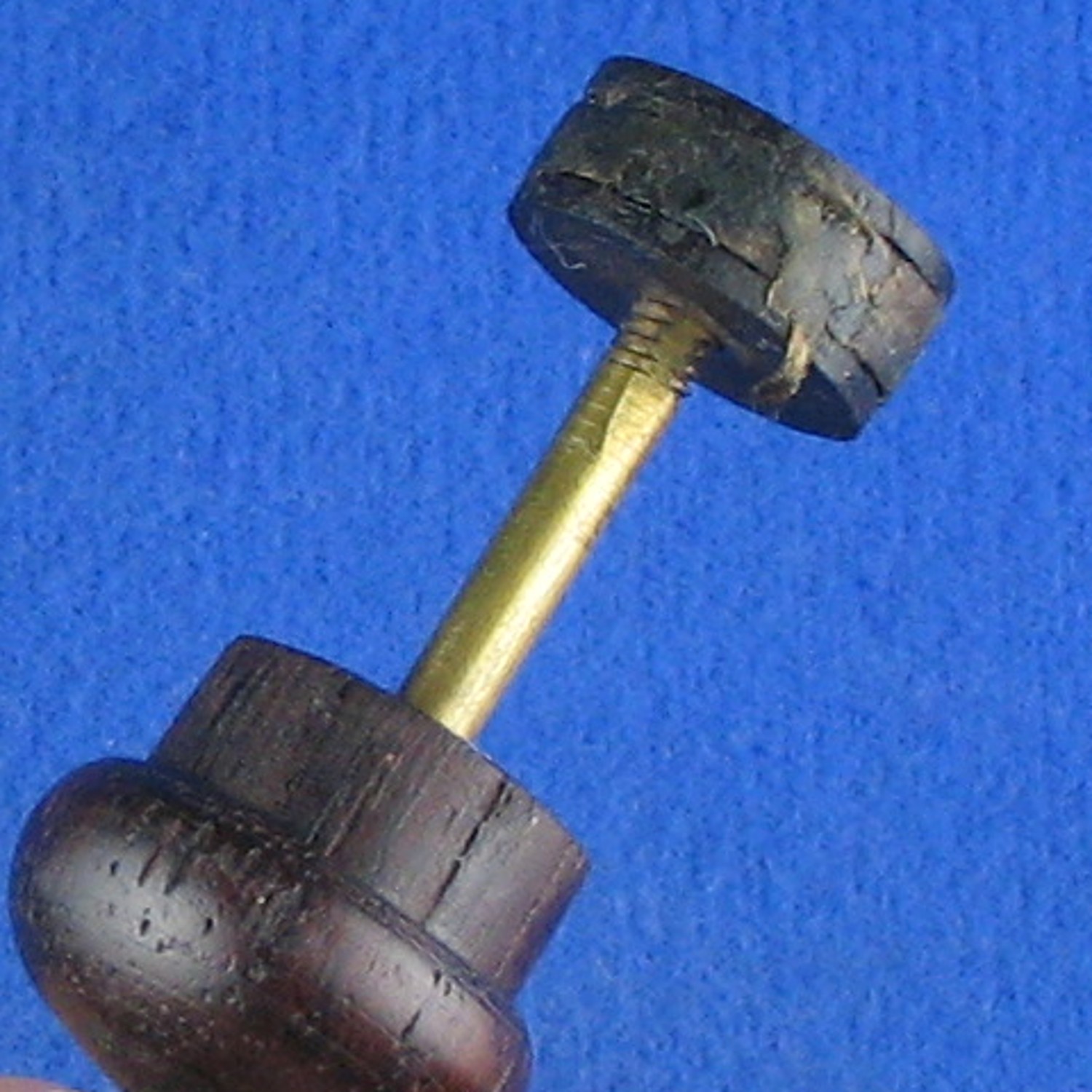
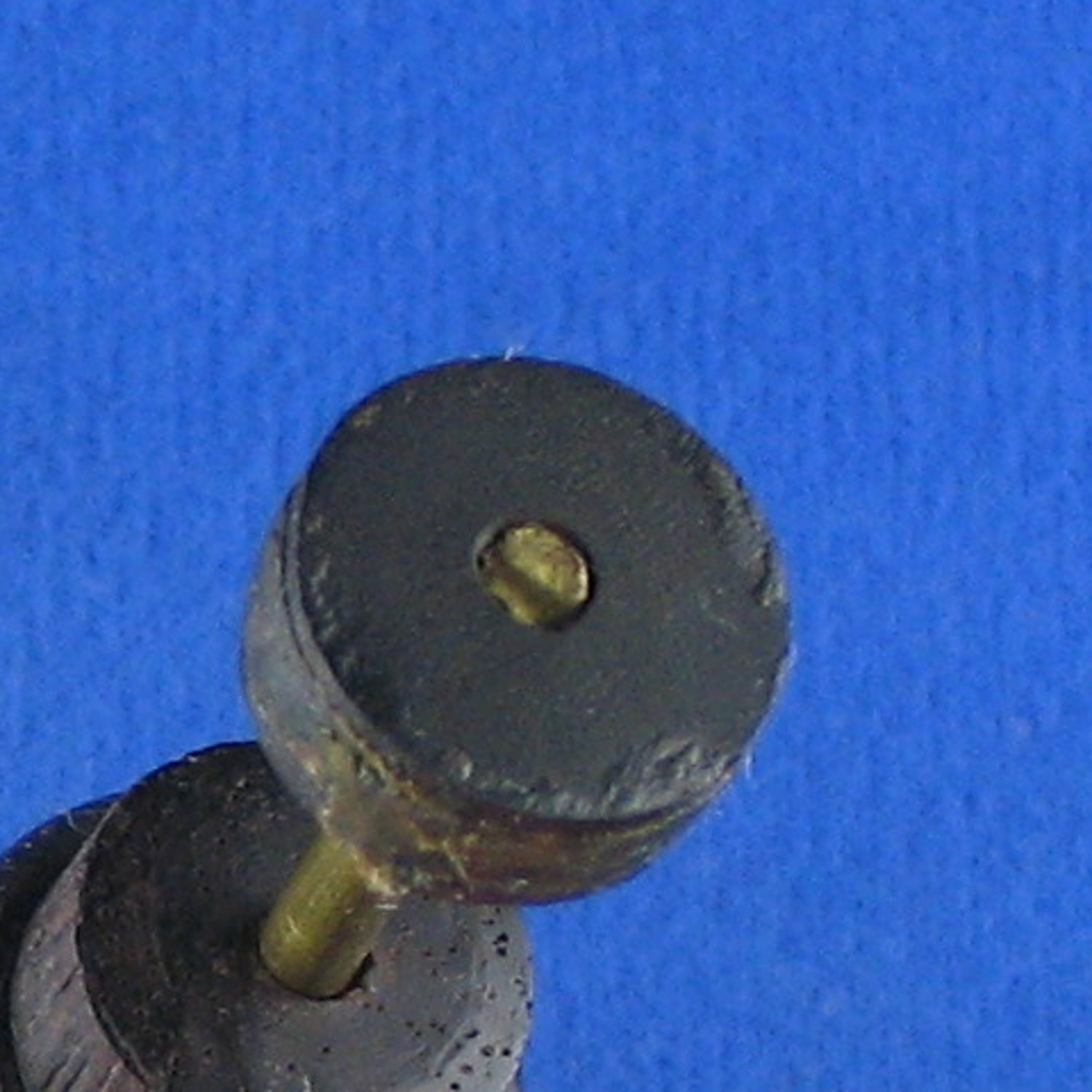
In 1898 Johnson produces TWO patented designs. We have not found the February patented whistle with the straight flat stays yet, however presented here is the second patented whistle approaching the fall of that year.
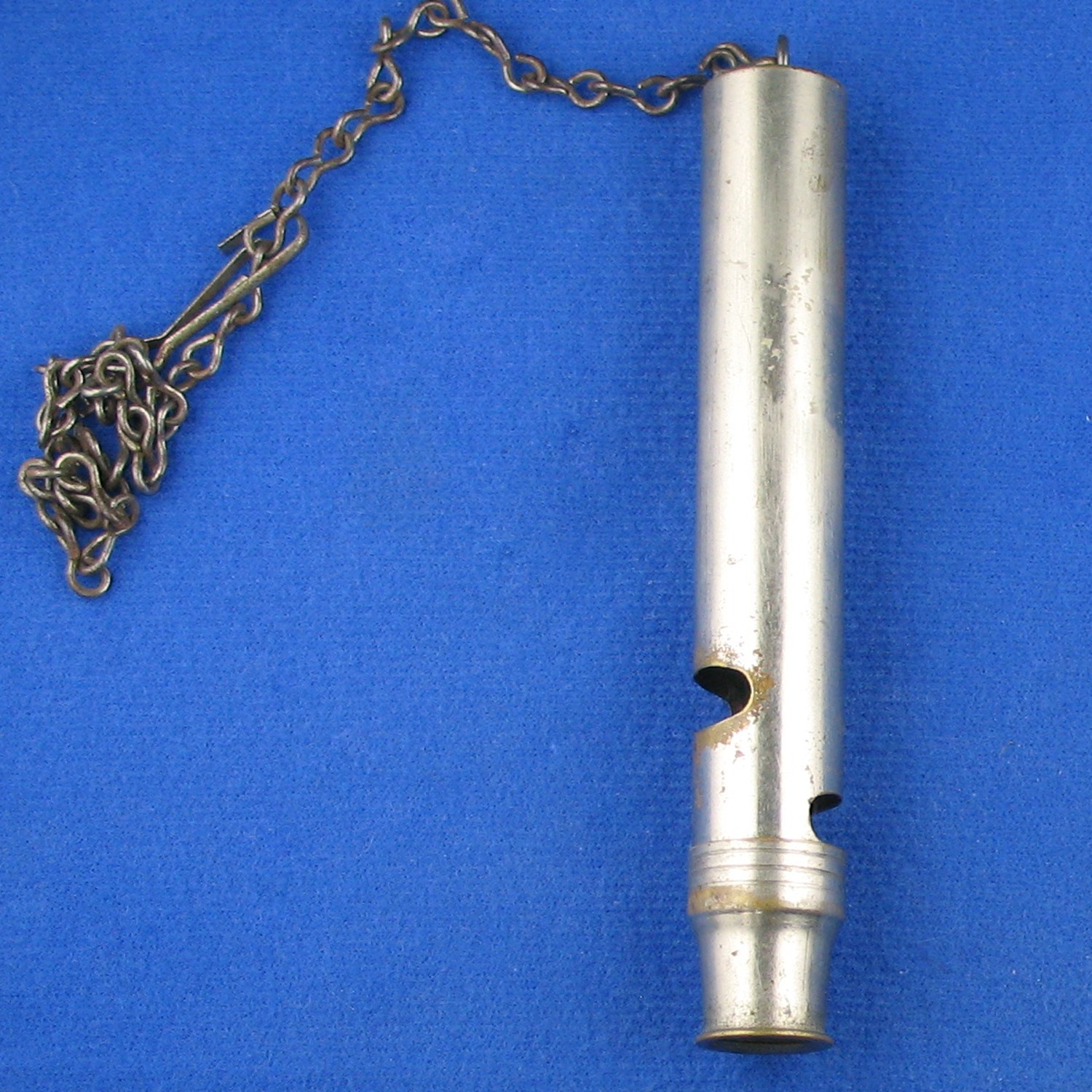
Here is whistle ( slider ? ) a possibly made for Johnson ( from a private collection ) a small possible slider, or possibly German, utilizing his designed mouthpiece.
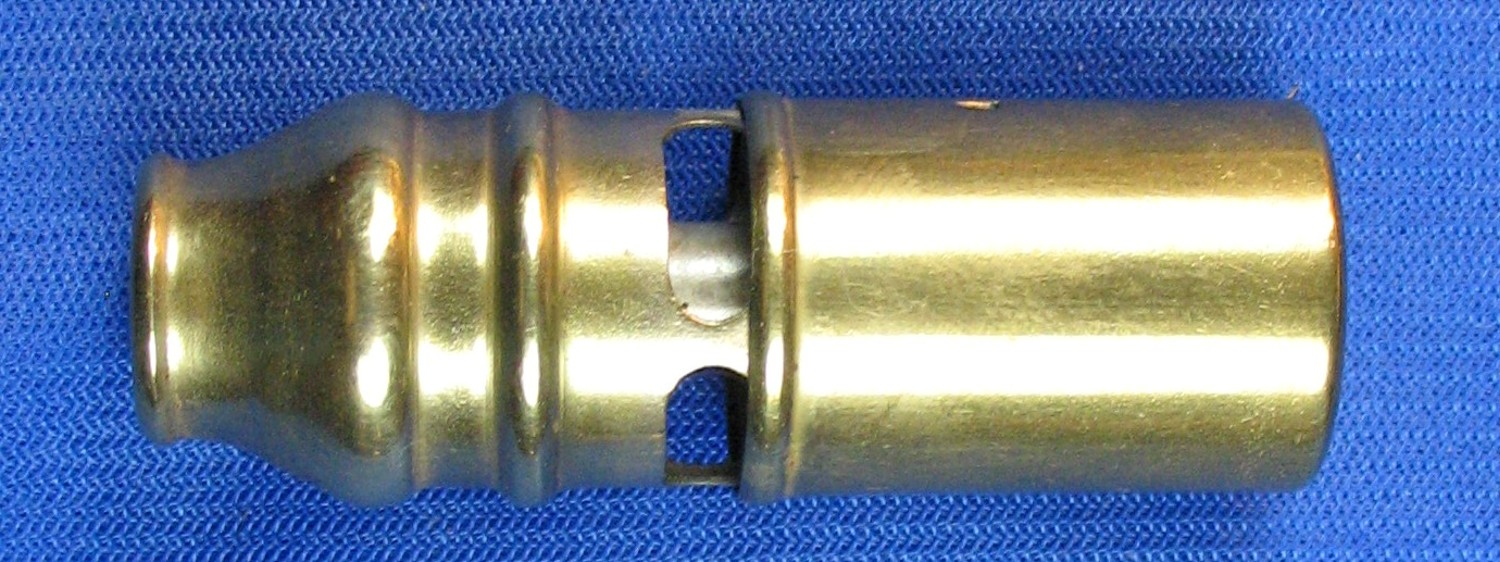
Lastly we comment on F.J. Hall himself. Now that we know he was making Johnson’s whistles till the end of the century, close to a decade, his modifications can be compared more sensibly. The problem ?? To find one to match his own variation with the shorter chamber, because from the outside they look alike.
Much of this research took place over the last decade and took a tremendous amount of effort. We hope you have enjoyed this article as much as we did discovering so much about a talented whistle inventor and designer. F.L. Johnson’s whistles present such a clear low tone, they are quite unique. No longer will he be left in obscurity. Along the way we have now seen that F.J. Hall emerges as another talented American manufacturer.
Questions for research still:
- Was the original patented ‘diaphragm’ attachment made — as designed by F.L. Johnson ??
- Have any F. J. Hall’s whistles been found ??
- Was the Feb 1899 whistle manufactured ??
- Was the last whistle with the squeeze bulb manufactured ??
- Did Johnson design/manufacture other whistles ??
- ???
Bibliography:
Biennial Report of the Factory Inspector to the Governor 1906-08
Public Documents of the State of Connecticut
Acts and Laws passed on -1890
google patents
TWG
Posted November 5, 2018
